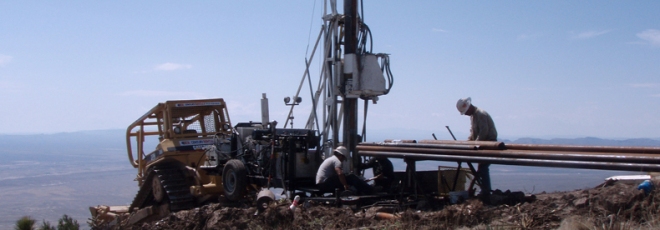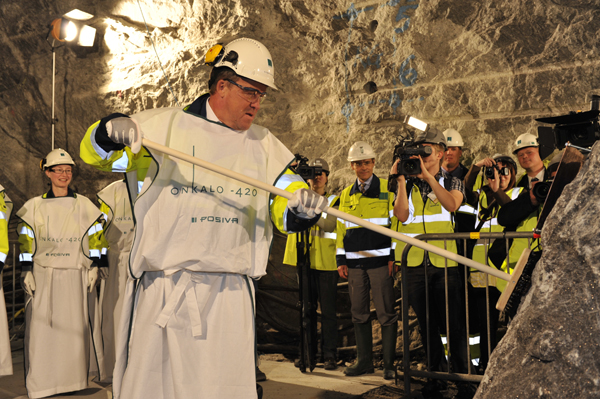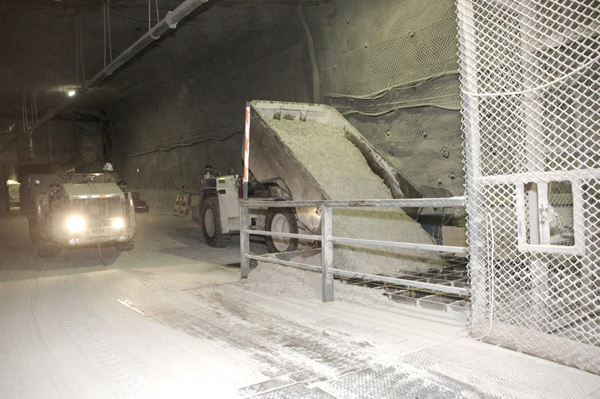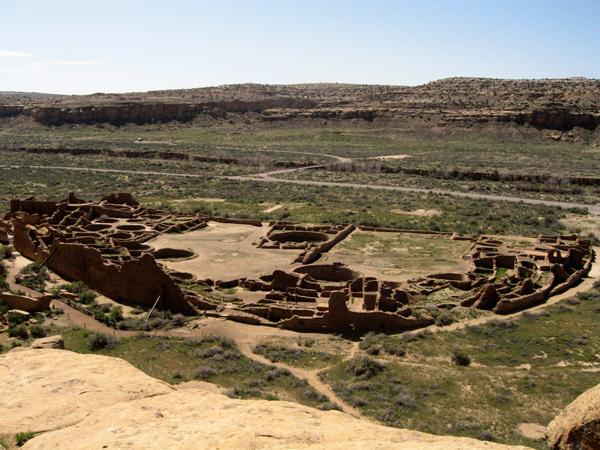Filed under: Uncategorized
 image: Long Now Foundation
image: Long Now Foundation
The Long Now Foundation based in San Francisco has been working on an ambitious clock project for the past 14 years. This August they began geologic testing in Texas for its proposed site. The clock is designed to keep time for the next 10,000 years, and in doing so, “encourage long-term thinking.”
“The idea behind the Clock is to be an inspiration for long-term thinking, to help make thinking long term automatic and common, instead of difficult and rare. It is hoped to be an artifact to connect its visitors to the future in the same way relics from ancient civilizations connect us to the past.” – Long Now website
Despite the fact that 10,000 years is very short in terms of geologic time, it amounts to a time frame that is vastly expansive in terms of human comprehension. Here at FOP we’re always inspired by projects that encourage humans to think in longer spans of time. The idea of humans designing anything intended to last ten millenia certainly piques our interest. The Long Now Foundation strives to do this across a broad array of projects and seminars.
Technical details about the Clock project (there are actually two clocks under construction) are readily available on the Long Now website. Danny Hillis is the lead designer for the project and you can download the plans used for the prototype clock. Stewart Brand wrote about the project over ten years ago in The Clock of the Long Now: Time and Responsibility, but the book appears to no longer be in print.
Though the Clock is a device intended to endure mechanically for 10,000 years without failure, it “does” much more than measure each of the seconds, minutes and hours unfolding between now and 12,010 AD. We’re not convinced that counting minutes or years does much to assist humans in grasping vast spans of time, or that calling the device a “clock” incites some its most interesting potential.
By intending to endure as a design-in-progress for the next 10,000 years, the project opens up a provocative space between “now” and a very far off “then” that exceeds the idea of a “clock.” This project breathes both speculation and reality into an seemingly unknowable span of time. It incites imaginations to project forward and think in a far future tense. It provokes humans both to think about time newly and expansively and to reflect on the concept of “time” as the human made construct that it is. How might the Clock’s existence change the way we contemporary humans think about and experience Gregorian time specifically?
 image: The Long Now Foundation
image: The Long Now Foundation
Alexander Rose, executive director of the Long Now Foundation, describes the 10,000 Year Clock as, “a piece of theater; a thing to rally around and change the conversation… you can’t tell someone to think long-term, but you can give them a range of contexts so they can find their own way to relate to it personally.”
It’s unclear whether the site will be open to the public when the clock is completed, the project is currently described as being located partially underground on land owned by the its patron, Jeff Bezos, founder of Amazon.com. Yet, even if the site never opens to the public, there is much that the project can provoke in terms of humans grasping time in new ways.
From the project’s website, it appears that the Clock’s designer is interested in this,
“Danny reasoned that by actually building a remote monument, the discussions around long-term thinking would be far more focused and it would lend itself to good storytelling and myth — two key requirements of anything lasting a long time.” – Long Now website
This got us thinking of Krzysztof Wodiczko. His work offers an additional way to think about the Clock: as a project of Interrogative Design.
“Design as a research proposal and implementation can be called interrogative when it takes a risk, explores, articulates, and responds to the questionable conditions of life in today’s world, and does so in a questioning manner. Interrogative design questions the very world of needs of which it is born. It must respond with a double urgency to such a world…it needs to increase and sustain the high level of ethical alertness that creates…an ongoing motivation for critical judgment toward the present and past to secure a vision for a better future.” – Krzysztof Wodiczko, Critical Vehicles
What happens if we think of the Long Now Clock not as a “clock,” but as a project of interrogative design? If so, the project would serve as a, “response to the questionable conditions of life in today’s world.”
 6.17.2010 topping-out ceremony at Onkalo, Finland, image: Posiva
6.17.2010 topping-out ceremony at Onkalo, Finland, image: Posiva
Beyond the Long Now Clock project, a wider context of “long-term” thinking and design is unfolding today. Two contemporaries of the clock project are Onkalo and WIPP. These highly technical projects are among many others now in planning stages that aim to endure and protect nuclear waste for spans of time from 10,000 years to 100,000 years. Obviously, the stakes involved in these projects are quite different than the Long Now Clock, and the technical factors that challenge their abilities to endure such spans of time are far more complex. If the Clock’s design fails, if it malfunctions and “loses” time, presumably no one gets hurt. The consequences would be far less catastrophic than if the future-bound designs of Onkalo or WIPP failed. Because the Clock can afford to have “functionality” be a peripheral endeavor, it could embrace its opportunity to pose other important questions as a “piece of theater” or a work of interrogative design.
Collectively, all of these projects beg the question, when did long-term thinking become necessary for humans?
 An underground dump truck empties its load at the Salt Handling Shaft for the 2,150-foot trip to the surface, image: WIPP
An underground dump truck empties its load at the Salt Handling Shaft for the 2,150-foot trip to the surface, image: WIPP
It is an impossible question to answer. Yet there are plenty of sites, such as Stonehenge and Chaco Canyon, that suggest that for millennia, humans have tried to reach far beyond their place in time. You could say that even without knowing the true intentions of their creators, these sites have successfully kept time “active”, simply by enduring for thousands of years, without all the mechanics. Projects such as Onkalo and WIPP prove that humans have other needs and motivations for long-term thinking today.
 Pueblo Bonito, Chaco Canyon, FOP 2007
Pueblo Bonito, Chaco Canyon, FOP 2007
We sense a connection between sites such as Onkalo, the Long Now Clock, and ancient sites such as Stonehenge. They are all physical, architectural manifestations of human attempts to design for what exceeds them, primarily, the forces of time. No one knows how any of these sites will be received in the future, if at all. As an object composed of highly resilient geologic materials, the Long Now Clock will likely weather the intended 10,000 years in one state or another. As for the intended deep futures of Onkalo and WIPP? We have only speculation.
Regardless of the countless possible outcomes, it seems worthwhile to take a moment and consider the deeply human provocations that each of these projects pose today because of what they can be–and what they cannot be–“within life in today’s world”.
Leave a Comment so far
Leave a comment





